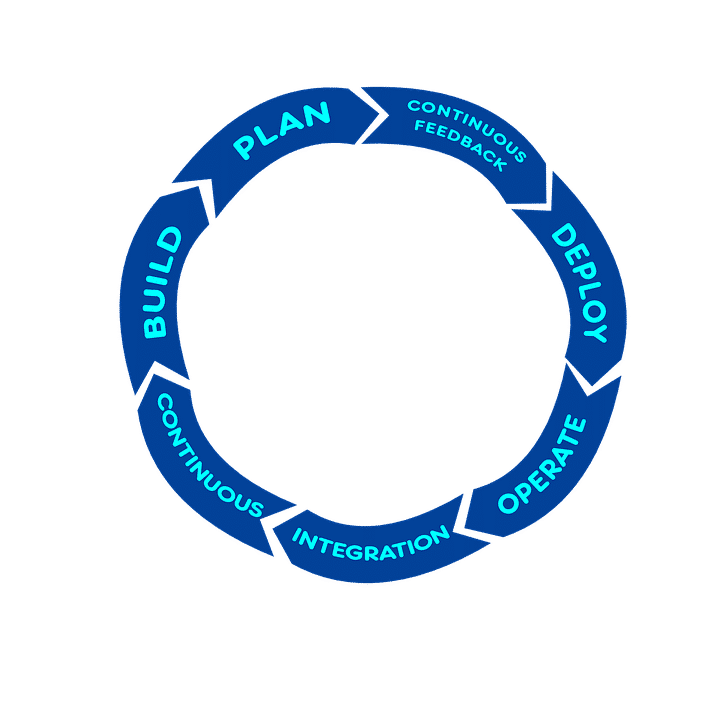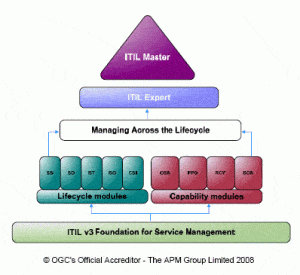What is the Difference Between ITIL and ITSM?

ITIL and ITSM are two commonly used terms in IT, but they are not the same. What is the difference between ITIL and ITSM?
Introduction to ITIL and ITSM
ITIL stands for Information Technology Infrastructure Library and it provides a structured approach to delivering value to customers by aligning IT services with the needs of the business. Meanwhile, ITSM is a broader concept that covers activities like service design, service transition, and service operation.
ITIL focuses on providing a framework of processes and practices to improve service delivery. It offers guidance on incident and problem management, change management, and service level management. On the other hand, ITSM considers elements like organizational culture and resource management.
Organizations may adopt the principles outlined in the ITIL framework as part of their overall ITSM strategy; however, this is not enough. Implementing an effective ITSM strategy requires understanding organizational goals and objectives and customizing the implementation to meet specific business needs.
What is ITIL?
ITIL stands for Information Technology Infrastructure Library. It’s a set of best practices for managing IT services. It covers service design, transition, operation, and improvement.
It helps companies match IT services to business needs. This leads to better value for customers. Plus, ITIL focuses on continual improvement. It encourages organizations to evaluate performance and find ways to do better.
For example, a multinational firm was having service disruptions. After taking on ITIL, they put an incident management process in place. Also, they used monitoring tools. As a result, downtime dropped. This made customers happy and operations more efficient.
ITSMs can be like trying to understand a teenager. It’s confusing, ever-changing, and full of tech acronyms.
Understanding ITSM
To understand ITSM, delve into its definition and key components. Learn how ITIL and ITSM differ in this section. Discover the meaning of ITSM and explore its essential elements.
Definition of ITSM
IT Service Management (ITSM) is a collection of tactics and processes which deliver and manage IT services. It’s designed to meet the needs of an organization and align the delivery of IT services with the business’s objectives. Elements of ITSM include service strategy, service design, service transition, service operation, and continual service improvement.
Organizations depend on technology to support their operations. ITSM is there to make sure these systems are effectively managed and maintained to provide reliable services. This includes defining service levels, incident management, problem management, change management, and asset management.
An important part of ITSM is prioritizing customer satisfaction. Organizations aim to understand customer needs and meet or even exceed expectations. ITSM helps companies respond quicker to incidents or problems while minimizing the effect on business operations.
Gartner’s “Magic Quadrant for IT Service Management Tools” reveals the value of ITSM. Adopting ITSM practices strategically can lead to improved efficiency, cost savings, better customer satisfaction rates, and increased productivity.
Overall, understanding ITSM is important for organizations wanting to make their IT operations smoother. By aligning technology with business goals and prioritizing customer satisfaction, companies can unlock great value from their IT infrastructure investments. Unlock the mystery of ITSM with these key components – it’s like discovering the secret recipe to get the perfect cup of coffee, but with less caffeine and more tickets.
Key components of ITSM
To ensure successful IT service management, understanding its key components is a must. They form the basis for an efficient system that delivers smooth operations and customer satisfaction. Let’s explore them in a table format:
| Component | Description |
|---|---|
| Service Desk | Central point of contact for users. Handles incidents and service requests. |
| Incident Management | Process to resolve disruptions in service and reduce business impact. |
| Problem Management | Identifying root cause of recurring incidents and finding permanent solutions. |
| Change Management | Ensuring changes to IT infrastructure are implemented safely and with minimal downtime. |
| Release Management | Planning, testing, building and deploying software releases. |
| Configuration Management | Keeping records and documentation of all configuration items in the infrastructure. |
These components work together for a unified approach to IT service management. Aside from them, IT Asset Management, Knowledge Management, and Continual Service Improvement (CSI) should also be explored.
Don’t forget to incorporate these components into your ITSM strategy! Incorporate a service desk, incident management processes, problem-solving techniques, change management protocols, release management practices, and configuration control methods. This will guarantee streamlined operations, reduced downtime, and great value delivery.
Effective ITSM is essential for businesses in today’s technology-driven world. Take advantage of these components and stay ahead of the game in the digital era.
Key Differences between ITIL and ITSM
To understand the key differences between ITIL and ITSM, delve into the aspects that set them apart. Explore the focus and scope, framework and methodology, implementation approach, as well as the benefits and limitations of both practices. It’s time to uncover how each solution offers distinct advantages and disadvantages.
Focus and Scope
ITIL and ITSM are crucial for the successful running of tech-driven organizations. They are related, yet it is important to understand their differences. Let’s take a look at a table that shows the unique features of each.
| ITIL | ITSM |
|---|---|
| Process-oriented | Customer-oriented |
| Focuses on specific best practices | Covers all aspects of service management |
| Enhances quality and efficiency | Improves customer satisfaction and experience |
| Adopted by large enterprises | Suited for all sizes |
| Provides guidelines | Uses tools and tech for effective delivery |
Although both prioritize service quality, they differ in approach. ITIL is about setting processes and protocols. ITSM stresses understanding and meeting customer needs. ITIL began as best practice guidelines created by the UK’s Central Computer and Telecommunications Agency in the 1980s. Now, it is a widely used framework.
It is like a bridge and a GPS – follow the GPS without ending up in the river!
Framework and Methodology
ITIL and ITSM are essential for effective IT service management. But what’s the difference between them? Let’s explore with a comparison table.
| ITIL | ITSM | |
|---|---|---|
| Definition | An industry-standard framework for IT service management | A broader term encompassing all aspects of managing IT services |
| Focus | Best practices for IT service delivery and operations | Managing end-to-end service lifecycle |
| Scope | Specific guidelines and processes for IT service management | Includes processes, policies, and methodologies beyond IT |
| Adoption | Widely adopted by organizations across various industries | Applied in a more customized manner based on organizational needs |
| Certifications | Offers various levels of certification programs | No specific certification programs |
| Flexibility | Can be implemented as a standalone approach or integrated with other methodologies | Highly adaptable to meet specific business requirements |
A key point to note is that while ITIL is often seen as a subset of ITSM, it provides more specific guidance. However, ITSM covers a wider range of practices.
Let’s illustrate this with an example. A company needed to manage their services during digital transformation. Initially, they chose ITIL but soon realized it was too limiting. They then switched to ITSM, which enabled them to be more efficient and align better with their goals.
It’s clear that understanding the differences between ITIL and ITSM is invaluable in deciding the right framework. Choosing the right one can help businesses manage their services and thrive in the digital world.
Implementation Approach
To integrate ITIL and ITSM into your organization, you need a systematic approach. Here’s a guide to get started:
- State your goals: Be clear on what you want to achieve with ITIL and ITSM. This’ll give you a direction for implementation.
- Evaluate existing processes: Check your IT infrastructure and processes to see what needs improvement. This’ll form the basis of aligning with ITIL and ITSM principles.
- Make an implementation plan: Detail your steps and milestones for introducing ITIL and ITSM. Include resource allocation, timelines and responsibilities.
- Implement and watch: Execute the plan while keeping an eye on progress. Assess the impact, get feedback from stakeholders and solve any problems.
Continuous improvement is also key to ITIL and ITSM success. Review performance metrics, seek user feedback and adapt to business needs.
Forrester research shows that successful ITIL and ITSM implementation leads to cost reduction of 30%. That’s a big benefit! But remember their limitations – like trying to cram an entire IT department into a tiny server closet.
Benefits and Limitations
Analyzing the differences between ITIL and ITSM reveals both their benefits and limitations. To determine which approach is best, it’s essential to comprehend these factors.
So, how do ITIL and ITSM fare when it comes to pros and cons? Let us peek at some key elements:
| Benefits | Limitations |
|---|---|
| Enhanced efficiency | Lack of flexibility |
| Improved service | High implementation costs |
| Better customer satisfaction | Dependence on external tools |
ITIL emphasizes efficiency and service, yet its flexibility could be lacking. It can improve customer satisfaction, however, its high implementation costs could be a struggle. Also, external tools dependence may hinder effectiveness.
Company X had to choose between ITIL and ITSM. They noticed the advantages of both, so they had to carefully assess their requirements. After a thorough evaluation, they chose ITSM due to its ability to adapt to their ever-changing business needs. This decision was beneficial, as their service delivery efficiency increased dramatically.
By examining the benefits and limitations of ITIL vs. ITSM, organizations can make informed decisions that fit their goals and objectives. Finding the perfect solution isn’t easy; what suits one company may not work for another. Thus, understanding these details allows businesses to optimize IT service management processes properly.
Difference Between ITIL and ITSM
ITIL and ITSM are both required for success in IT service management. ITIL focuses on processes and best practices while ITSM is broader, including people, technology, and strategy. ITIL also offers certification to show knowledge and expertise in these practices.
Gartner’s “Magic Quadrant for IT Service Management Tools” shows that combining ITIL and ITSM leads to better operational efficiency and customer satisfaction. In conclusion, ITIL and ITSM are complementary. Implementing both is essential for successful IT service management.
Frequently Asked Questions
 FAQs: What is the difference between ITIL and ITSM?
FAQs: What is the difference between ITIL and ITSM?
Q1: What does ITIL stand for?
A1: ITIL stands for Information Technology Infrastructure Library.
Q2: What does ITSM stand for?
A2: ITSM stands for Information Technology Service Management.
Q3: What is ITIL?
A3: ITIL is a comprehensive set of best practices and guidelines for managing IT services and infrastructure to deliver high-quality and cost-effective services to customers.
Q4: What is ITSM?
A4: ITSM refers to the implementation and management of IT services based on industry best practices, including processes, procedures, and tools, to meet the needs of an organization and its customers.
Q5: What is the difference between ITIL and ITSM?
A5: ITIL is a framework that provides a set of best practices for IT service management, whereas ITSM is the overall approach or discipline of managing IT services using various frameworks, including ITIL.
Q6: Can ITIL and ITSM be used together?
A6: Yes, ITIL and ITSM are complementary and can be used together. ITIL provides specific guidance on how to manage IT services, while ITSM encompasses the broader management approach for delivering IT services effectively.
















Leave a Reply